Non-surgical Skin Treatments
Sometimes, no matter how much you take care of your skin, blemishes, ailments, and other conditions may arise due to your body’s natural chemistry and the environmental factors you’re exposed to. When this happens, a lot of minor skin conditions may arise and keep you from looking your best, or worse, causes substantial effects on your health. Observing the growth of moles and warts, developing rashes and keloids, and suffering from painful pimples and cherry spots can cause pain and discomfort, or even signal underlying conditions.
At La Fontaine cosmetic clinic, we believe that early treatment is the best solution to treating these skin conditions before they worsen. That’s why we offer quick, but lasting nonsurgical skin treatments to treat these conditions, so you can enjoy healthy and flawless skin in no time.
Dr. Leonard Bienenstock, a family physician, is certified to treat minor, but common skin conditions that can hamper your health over time and keep your skin its regular healthy glow. See how our nonsurgical cosmetic treatments can restore your skin’s health and appearance in no time!
At La Fontaine cosmetic clinic, we believe that early treatment is the best solution to treating these skin conditions before they worsen. That’s why we offer quick, but lasting nonsurgical skin treatments to treat these conditions, so you can enjoy healthy and flawless skin in no time.
Dr. Leonard Bienenstock, a family physician, is certified to treat minor, but common skin conditions that can hamper your health over time and keep your skin its regular healthy glow. See how our nonsurgical cosmetic treatments can restore your skin’s health and appearance in no time!
Contact Us
Skin Tags
Skin tags are small bumps on the skin, often growing like stalks made out of skin. While generally harmless, it’s no doubt that having these unwanted growths can be annoying over time. Skin tags commonly grow on the neck, armpits, eyelids, under the breasts, and groin folds. Using nonsurgical cosmetic techniques, a doctor can remove skin tags through one of these ways:
- Freezing off using liquid nitrogen
- Slicing off with a scalpel
- Cauterizing or laser treatment
- Tying off or ligation, causing the tag to lose circulation and fall off.
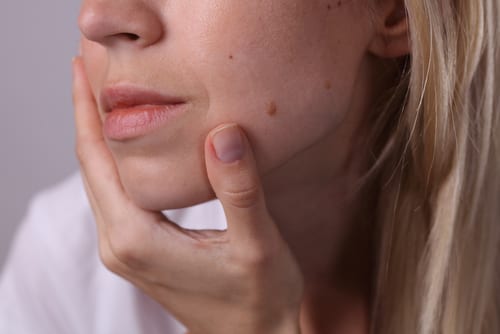
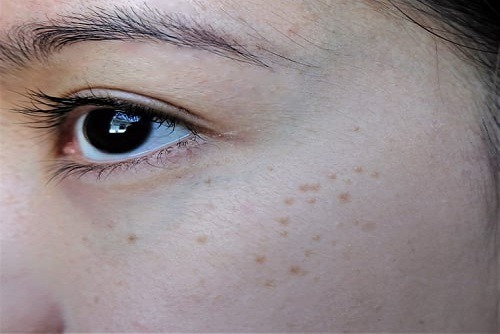
Keratosis
One of the most common non-cancerous growths on the skin, keratosis appears as a brown, black, or light tan growth found on the back, shoulders, face, or chest. It may also appear scaly or waxy, and at times, slightly elevated.
Our doctors can administer nonsurgical skin treatments to remove these growths. We use these cosmetic treatments for keratosis:
- Freezing with liquid nitrogen
- Curettage, or scraping the surface of the skin with a specialized instrument
- Burning or cauterizing
- Vaporizing using laser, known as ablation.
Keloids
When you have a scar, it’s not only the possibility of it staying on forever that can be disappointing, especially when you want to look your best; there’s also the possibility of having keloids later on.
Keloids are tough, heaped-up scars that are more pronounced and appear elevated on your skin. They usually have a smooth top and are pink or purple in color, irregularly shaped, and can grow in size. While scars may become smaller over time, keloids are the opposite.
The good news is, with simple, non-surgical skin treatments, you won’t have to deal with keloids forever. Our doctors can administer these treatments to cure your keloids:
- Corticosteroid injections to flatten keloids
- Pulsed-dye laser to flatten keloids and reduce redness
- A minor surgical incision to cut into the keloid and remove it
- Wearing a sheet of silicone gel on the affected area for months
- Cryotherapy, or freezing keloids using liquid nitrogen, so they can flatten out
- Interferon protein injections to reduce the size of keloids
- Chemotherapeutic injections of fluorouracil and bleomycin
- Radiation.
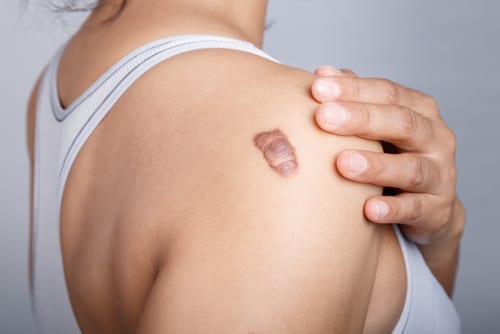
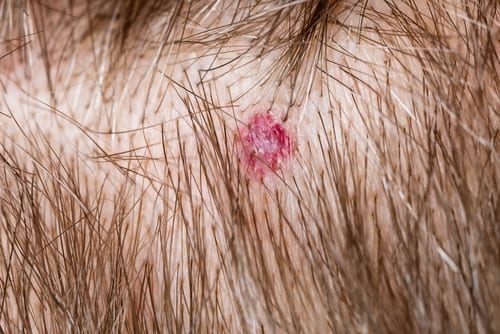
Skin Nodules
Skin nodules present as elevated lesions on the skin, or deeper inside the skin tissues. It’s important to note than skin nodules are different from boils, small cysts, and abscesses. A lot of patients usually see a doctor about their nodules because of they look, and the possibility that these are malignant.
Nodules can be treated with topical medication, oral antibiotics, or, depending on the severity, minor procedures, such as:
- Drainage and extraction
- Chemical peels
- Laser therapy
- Blue light therapy
- Injections.
Lipoma
Not all tumors are dangerous, and lipomas are proof of that. Lipoma is a benign tumor that’s composed of fat tissues. While generally soft, painless, and movable, these occur at just under the skin or sometimes deeper, which can be a cause for concern or discomfort. Lipomas are usually found in the shoulders, abdomen, or upper back.
Some prefer to leave lipomas as they are, but when they start to grow in size or cause pain, it’s time to have them removed. Lipomas can be removed through simple skin treatments, such as:
- Minimal excision extraction, or minor surgical removal by cutting them out.
- Liposuction can also be done to remove the fatty lump.
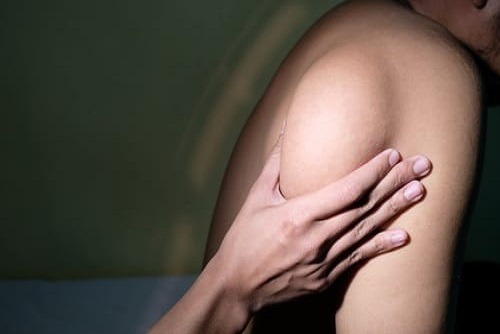
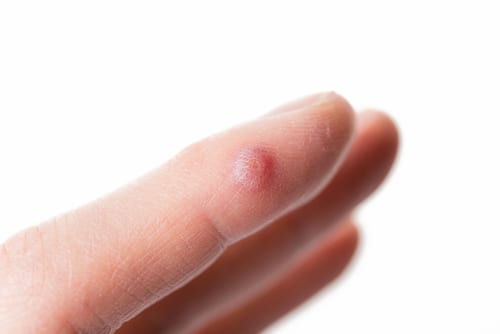
Warts
Warts are growths on the skin that are caused by some types of HPV virus that enter broken skin. The virus can then cause the skin’s top layer to grow rapidly, which forms growths known as warts.
While most warts do not require immediate or extensive treatment, once they spread, become painful, or patients grow bothered by their appearance, these non-surgical cosmetic treatments can be used:
- Home treatments such as salicylic acid
- Medicine injections
- Cryotherapy, or freezing the wart until it falls off
- Minor surgical techniques, such as curettage, laser surgery, or electrosurgery.
Painful Pimples
Pimples develop on the surface of the skin due to inflammation in the pores. The pore becomes inflamed as a result of bacteria, oil, and dead skin cells building up; to combat this, the body releases white blood cells, and the resulting inflammation creates a pimple.
Pimples become painful when they occur in pores close to a nerve. When this happens, it’s important to resist from trying to pop it, and instead seek a doctor’s advice. Our doctors specializing in cosmetic treatments can treat painful pimples using:
- Acne extraction: when pimples don’t subside, the doctor can use sterile instruments to remove them.
- Incision and drainage: this pimple removal technique involves a sterile needle and surgical blade to perform a small incision that will open the blemish and drain the build-up.
- Corticosteroid injections: the doctor can inject this medication to treat painful acne to speed healing and reduces the risk of scarring.
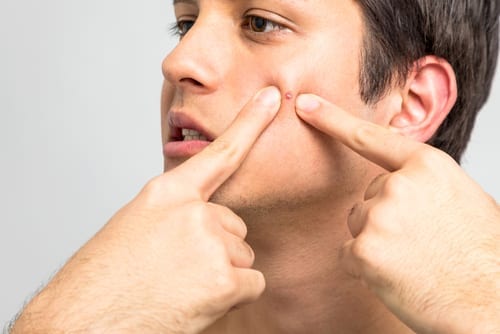
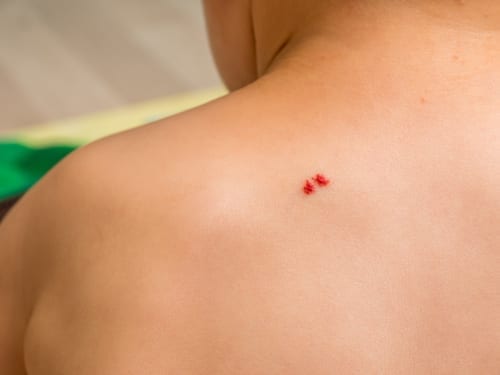
Cherry Spots
Cherry spots, formally known as cherry angiomas are skin growths that appear as red moles. These can develop on most parts of the body, but are usually found on people at least 30. They’re called cherry spots because the accumulation of small blood vessels give the growth a reddish appearance.
Cherry spots are usually left by themselves and don’t require treatment, unless they bleed often or their size, shape, or color change. Sometimes, it’s as little as a scratch, rub, or small cut that that can cause the angioma to bleed. Plus, if the spot grows in an exposed area, it’s a good idea to have it removed.
Doctors can remove cherry spots using these non-surgical cosmetic treatments:
- Laser: pulsed dye laser (PDL), a concentrated yellow laser, is used to heat the spot and destroy the lesion. Depending on the cherry spot, you may need up to 3 sessions for this to work.
- Cryosurgery: this entails freezing the angioma with liquid nitrogen. As the spot is exposed to extreme cold, it will freeze, causing it to harden and fall off.
- Electrocauterization: this minor surgical treatment is done by burning the angioma with an electric current stemming from a small surgical pole.
- Shave excision: a minor procedure that eliminates the need for invasive surgeries, a shave excision is done to cut the lesion or growth from the top layer of the skin, and after, the small wound is closed using stitches or sutures.
Earlobe Repair
Earlobes, the fleshy tissue of the ears, are more prone to damage than commonly known. The natural process of aging, wear of heavy and multiple earrings, and trauma, can all cause earlobes to droop, sag, split, or stretch so large that it would be impossible to wear accessories later on. When this happens, you’ll need an earlobe repair.
Luckily, an earlobe repair is a simple cosmetic procedure. This can be performed under local anesthesia, using only a small incision on the lobe to stitch it back together and restore ideal form. This can take up to an hour, depending on the damage. Most patients’ ears heal between 6 to 8 weeks, and with permission from the doctor after the ear completely heals, can be pierced again.
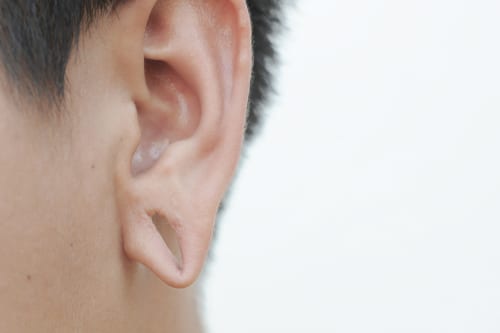
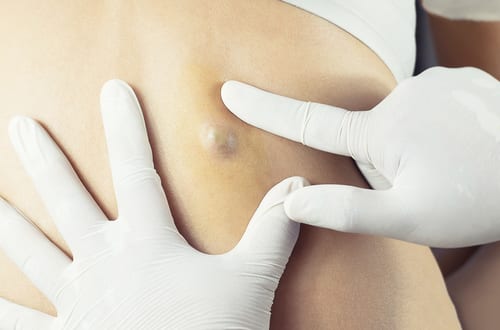
Cyst
Did you know that cysts can also grow on the skin? These non-cancerous, closed pockets of tissue are usually filled with build-ups of pus, fluid, or other materials. They can appear virtually anywhere on the surface of the skin, developing due to infections, clogged oil glands, or foreign bodies, such as body piercings.
While most skin cysts are painless and don’t require treatment, you can go to a doctor for treatment when they become sore or infected. To treat the condition, your doctor can:
- Apply a warm, moist cloth on the area to drain the build-up and heal. But with this treatment, the cyst is still likely to grow back.
- Inject medicine into a tender, swollen, or growing cyst to reduce swelling.
- Drain the cyst, but this can push the gunk further inside, causing the cyst to grow back.
- Administer laser removal treatments.
- Remove the cyst through a minor surgery that involves cutting into the cyst to take out its entire wall, preventing the cyst from growing back.
Moles
Moles are dark spots or blemishes on the skin, and can be a product of genetics. These spots come in different shapes and while most are just blemishes, others are symptoms of underlying health risks and conditions.
To avoid the spread and growth of malignant moles, these can be removed quickly and effectively using nonsurgical cosmetic treatments. Mole removal is a safe skin procedure that helps to reduce irritation, achieve a flawless appearance, and eliminate underlying health risks.
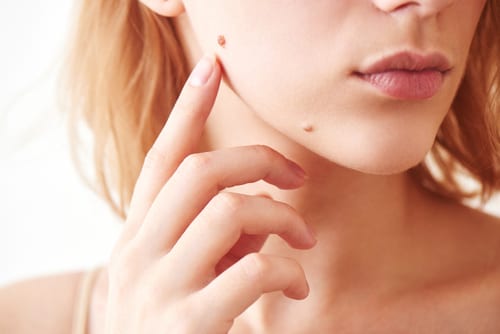
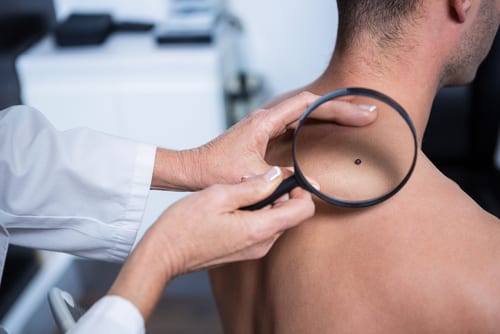
Growth
Human skin is tough — it protects the body from a lot of foreign objects and diseases, but that doesn’t mean that skin isn’t susceptible to damage. One of these is the appearance of growths. While mostly benign and not in need of urgent medical care, skin growths require attention depending on where and how they appear.
When skin growths cause pain, persist, or even just are bothersome in appearance, a doctor can safely remove them and prevent further growth with the use non-surgical cosmetic procedures:
- Cryotherapy, or freezing the growth with liquid nitrogen so it hardens and falls off.
- Electrocautery, or burning them off with a surgical instrument designed to cauterize lesions and growths.
- Cutting out the growth with surgical scissors.
Trust Our Cosmetic Clinic in Toronto
Have you noticed any of these types of growths showing up on your skin? Or perhaps you’ve been dealing with pesky moles and unwanted scars for a while now? Our doctors at La Fontaine Cosmetic Clinic can safely and effectively treat the condition using certified nonsurgical cosmetic treatments. The result is healthy, flawless skin that’s no longer marred by blemishes, growths, and all sorts of imperfections. Plus, if the moles and skin growths we treat are symptoms of underlying conditions, we can help you eliminate them at the onset.
Don’t risk the health of your skin by braving long lines at local health clinics to get growths and moles treated. Book a consultation today to get those growths checked, eliminate health risks, and enjoy flawless skin in no time!


